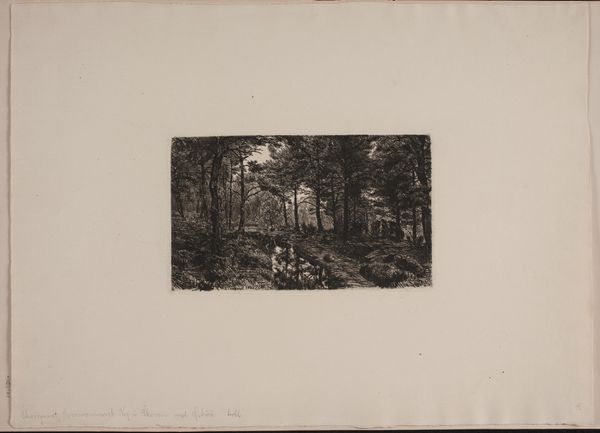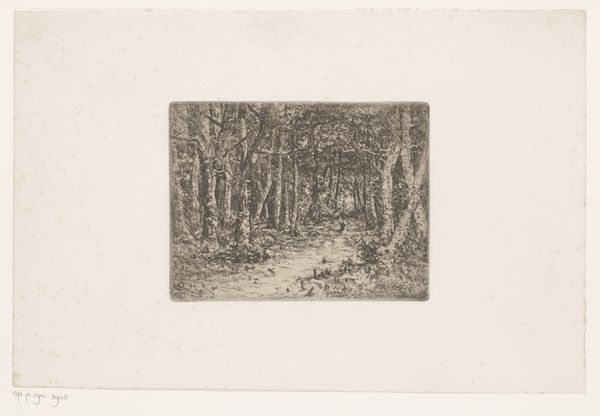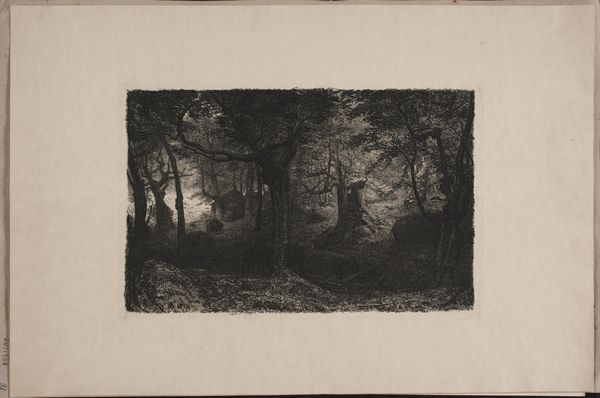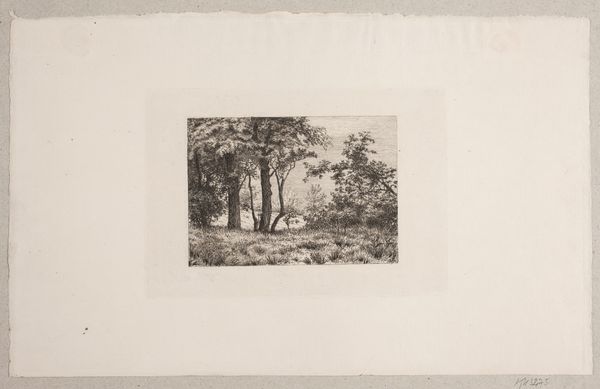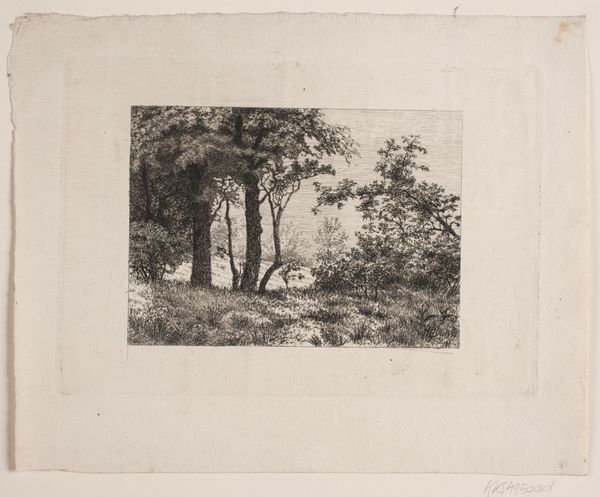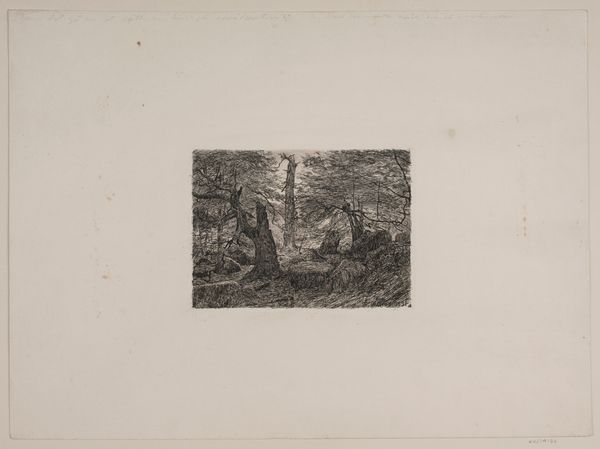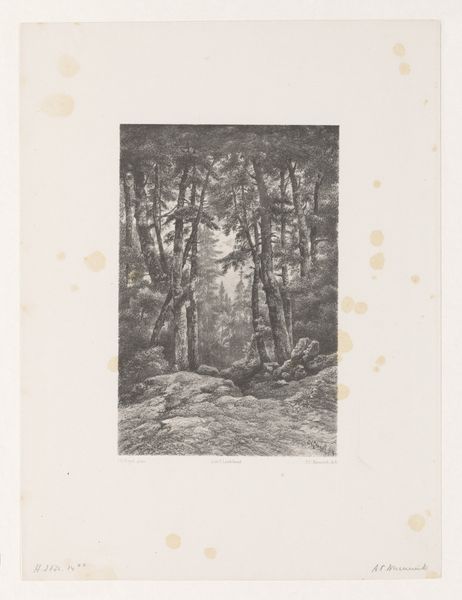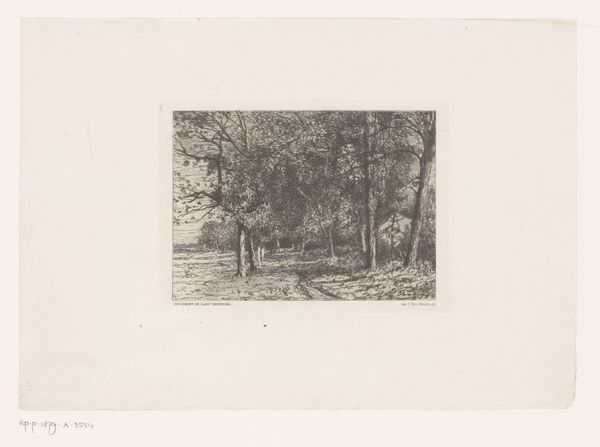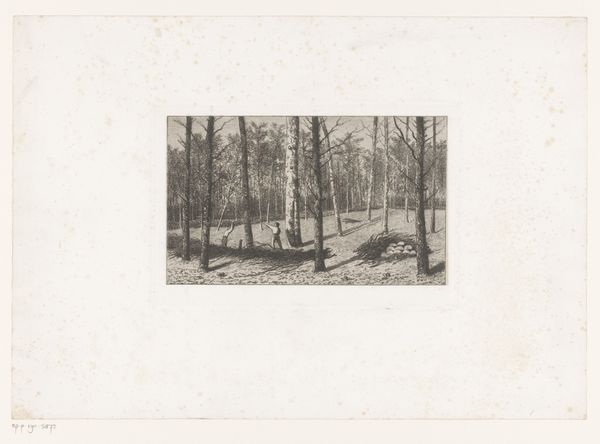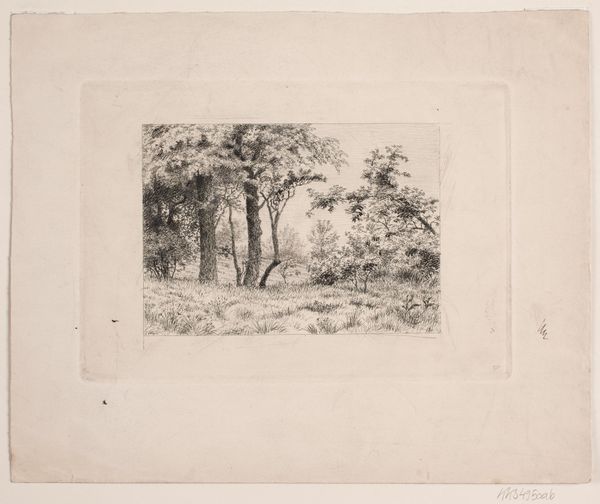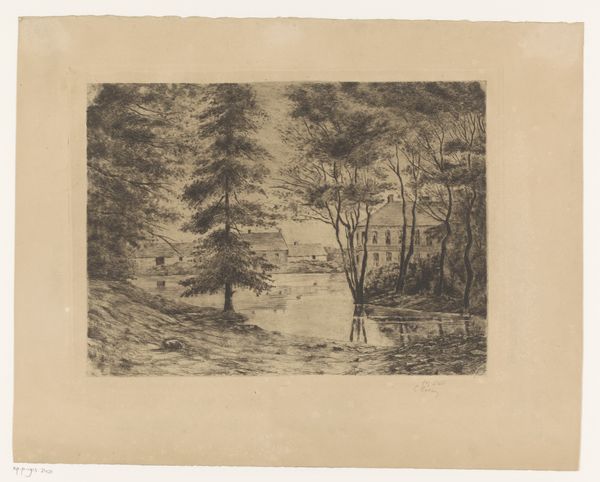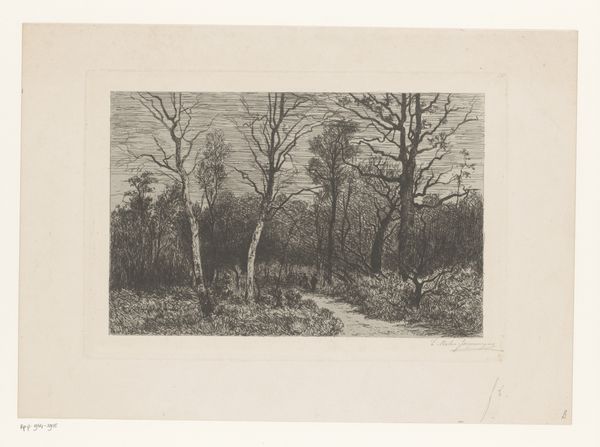
print, etching
#
ink painting
# print
#
etching
#
landscape
#
charcoal drawing
#
naturalism
#
realism
Dimensions: 125 mm (height) x 208 mm (width) (Plademål)
Curator: Here we have Niels Skovgaard's "Oversvømmet vej i skoven ved Øströ," which translates to "Flooded Road in the Forest near Øströ." It’s an etching from 1885, rendered in ink. It’s currently held here at the SMK, the National Gallery of Denmark. Editor: Immediately, I feel this… dampness. It’s so rich in tone, a real sensory experience rendered in monochrome. The trees crowding the path feel almost claustrophobic, but there's this silvery light peeking through. Curator: What I find interesting is Skovgaard's attention to the making process of etchings. The cross-hatching creates this depth; you can practically feel the layers he's building. Think about the labour involved in each mark he laid down. Editor: It makes me consider my own process. There's something grounding about noticing those details, like tracing his hand across the plate myself. A kind of conversation beyond language. Does it make you think about our human relationship to nature and environment? Curator: Definitely, and the naturalism and realism in his technique suggest a broader movement within Danish art at the time. Realism shifted the focus from national myths to depict what many thought was more true. Editor: But what do you make of this very intimate look at a very real world? How are we to see beyond landscape art and focus on the materials? Are we even thinking about our own access and limitations in doing that in the current times? Curator: An important consideration is class. The act of observing a flooded road may have been only be relevant to wealthy landowners with access to property. Etchings allowed such land or environmental ownership to be commodified and consumed. Editor: Perhaps a commentary on access too? And the ephemerality of landscapes, as water, light, seasons inevitably shift and rework our vision of places like these. You begin to think, can a perfect artwork ever exists without the world outside. Curator: So, in considering it, we move beyond simply the depiction of nature, thinking about access, labor and how the materials and mode of distribution shape the reading of an image. Editor: Beautiful. I will walk out with a better vision of the world and access and my place in the making and sharing process too!
Comments
No comments
Be the first to comment and join the conversation on the ultimate creative platform.
